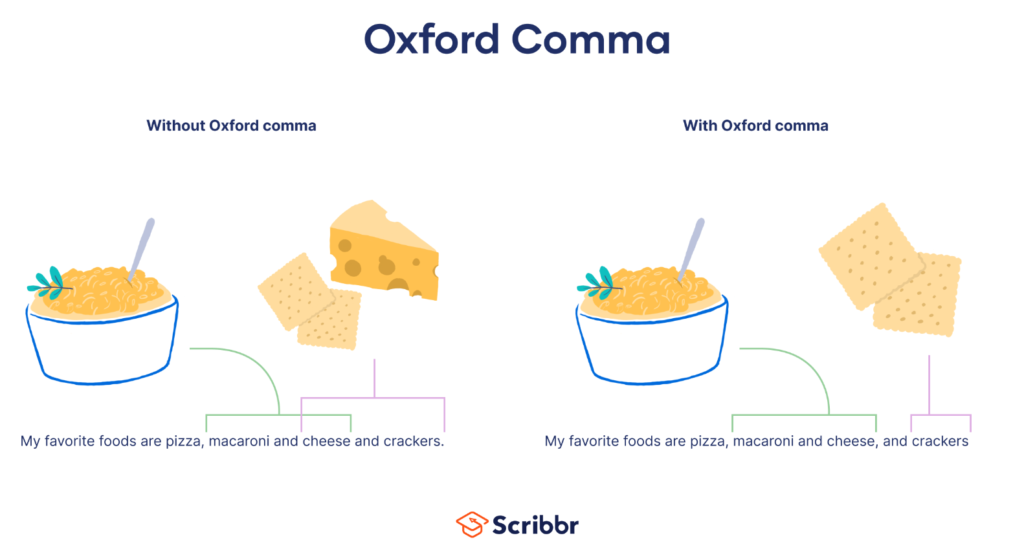What is the Oxford Comma?
The Oxford comma, also known as the serial comma, is one of the most debated punctuation marks in the English language. It appears before the final item in a list, just before the conjunction (usually “and” or “or”).
- (Ex.) I bought apples, oranges, and bananas.
In this sentence, the Oxford comma comes after “oranges.”
Some critics argue this comma is often unnecessary and clutters writing, especially when the meaning is already clear.
Why Is the Oxford Comma Important?
While this comma may seem like a minor detail, the presence (or absence) of this tiny mark can dramatically alter the meaning of a sentence. Without it, readers might misinterpret the sentence—especially when the items in the list are complex or could logically be grouped together.
Ex. 1

Ex.2

Ex.3
Without Oxford comma: “The report was prepared by the marketing department, John and Sarah.”
-This suggests that John and Sarah are part of the marketing department.
With Oxford comma: “The report was prepared by the marketing department, John, and Sarah.”
-This version clarifies that John and Sarah are separate contributors.
Consistency Is Key
Ultimately, the Oxford comma is a matter of style preference. The use of this comma is standard in American English and is often used in formal writing to avoid ambiguity. However, this comma is less common in British English and is typically reserved for cases where clarity is needed. Whether you choose to use the Oxford comma or not, it is important to remain consistent throughout your entire document.
At OWL, we recommend using the Oxford comma.
If you’re unsure whether to use the Oxford comma, consider these factors:
- Clarity: Does omitting the comma make the sentence unclear or open to multiple interpretations?
- Consistency: Are you writing in a style guide that requires (or forbids) the Oxford comma? For example, the Chicago Manual of Style recommends it, while the Associated Press (AP) style does not.
Note: OWL values clarity and brevity in communicating your story to diverse stakeholders. For this reason, we use the Oxford comma, even though we follow the AP Stylebook.
Jessica Azumaya
最新記事 by Jessica Azumaya (全て見る)
- 貴社の英語の報告書は「読み込む人」と「流し読みする人」両方に伝わる内容になっていますか? - 6月 17, 2025
- Do You Create Reports for Both Types of Readers in the West? - 6月 17, 2025
- June 2025 Quiz Answers - 6月 11, 2025
- 今知っておくべきESGキープレーヤー10選 - 5月 29, 2025
- Meet 10 ESG Players You Need to Know - 5月 29, 2025

